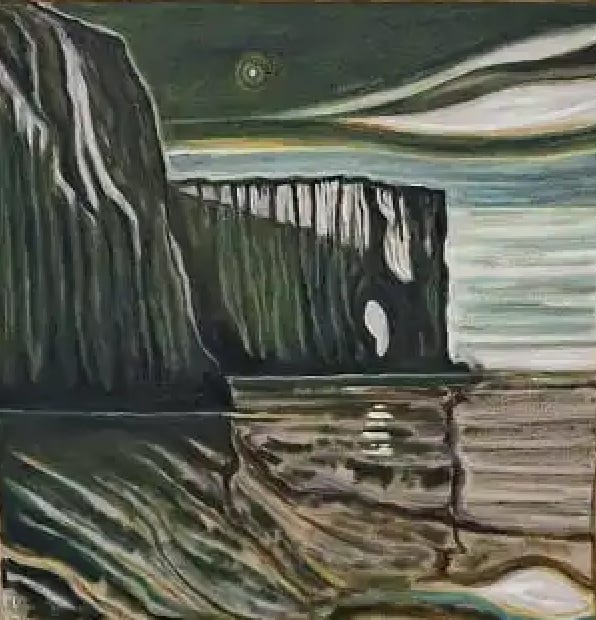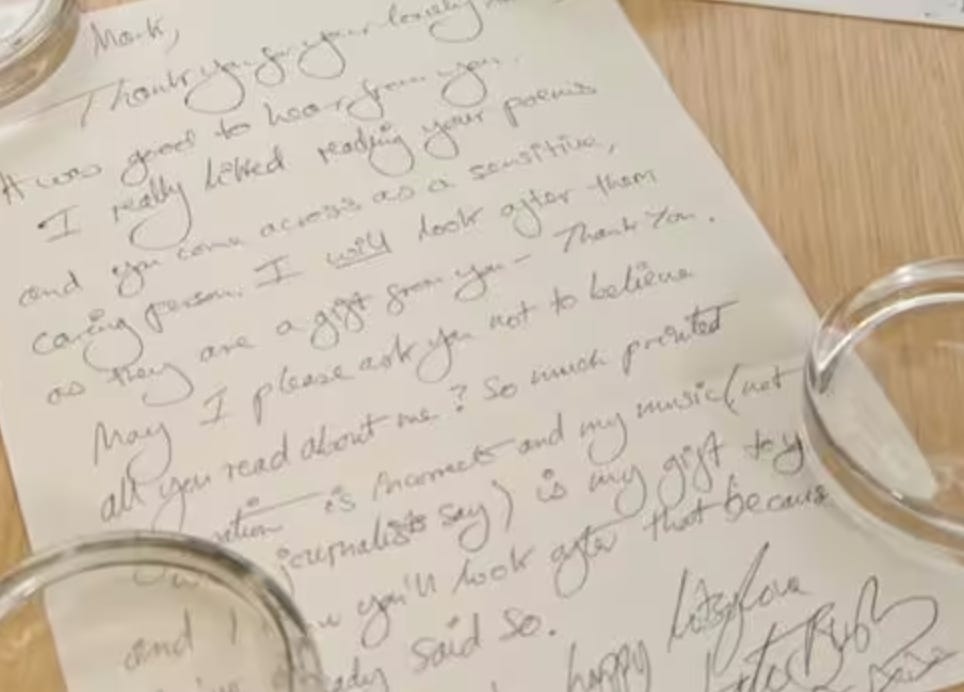All Night Long I Heard You Calling My Name
“The best way to find out if you can trust somebody is to trust them.”― Ernest Hemingway
It is the deep blues, the sound of the Hill Country. It is the sewing of the soil, seed after seed…it is the groove of the rolling hills and meandering baked dirt roads that always lead to somewhere…it is that endless slow time amidst the kudzu and blistering paint pealing off the walls and endless humidity. It is the goat picnics and the moonshine and the Sunday morning gospel brunches. As the sun careers up and down and up again, so does the slide of that guitar as it moves with an infectious beat that knows no end, mindfully slipping to and fro across the frets to the foot stomps and hollerin’. The Hill Country Blues is my favorite of all blues, where the angular pickery of the delta gets a smooth-over with verse and chorus song structures blending together forming a melodic drone that drapes over the hypnosis of the drum and bass: a velvety overground vibration that pushes the blood through the heart in its signature sweeter, slower fashion while the air molecules in witness are given the option to boogie on down, or take a needed siesta. Bukka White, Sleepy John Estes, Mississippi Fred McDowell: these were the earlier practitioners, with McDowell’s record I Don't Play No Rock n Roll being a defining moment.
The late music critic Robert Palmer, with Eurythmic Dave Stewart, introduced the world to the modern Hill Country blues in the early 90’s, contradicting current articles on the blues that were more obituaries than celebrations. Palmer wrote Deep Blues and later helped make a film of the same name that shined the floods on living, playing, recording Hill Country Blues artists like R. L. Burnside, Jessie Mae Hemphill (the She-Wolf), Robert Barnes, Lonnie Pitchford and Junior Kimbrough. Jim Dickinson, Scott Barretta, Jim O’Neal, Dr. David Evans, Bill Ferris and other local students had known all about the music and those artists forever, but it wasn’t until Deep Blues was released and soon after when Matt Johnson & Bruce Watson established Fat Possum records, producing instant classics by Junior Kimbrough and R. L. Burnside, that the world got its first taste of the Hill Country since Fred McDowell has passed away in 1972. Blues was indeed alive, with artists that were pushing their musical inheritance to new, rolling frontiers…longer, more ramblin’ songs, leaning more heavily on the boogie, catapulting the idiom to a whole new fanbase.
The first time I went down to Mississippi was in mid-1998, which my aging mind remembers because it was right after the passing of Junior Kimbrough. My friend Larry Hardy had introduced me to Junior’s classic release, Sad Days, Lonely Nights which contained his iconic arrangement of Old Black Mattie but more than that, it showcased the beautiful molasses of Juniors hypnotic, droney sound even with his guitar trenchantly fuzzed; of all the modern Hill Country artists, Junior’s sound (highlighted by the late, great Calvin Jackson’s unique drumming) was the most laid back and sleepily swinging.
Like Mississippi John Hurt, Junior’s was a unique voice…an original sound within a crowded universe. It was a sound that fell somewhere between the Malian “desert” blues and the minimalism of the New York scene. How did such influences bleed their way into the South? Maybe they did not have to. Maybe the country hill ley lines were all that was needed to energize those who decided to tap in. Kimbrough grew up with Charlie Feathers, a rockabilly musician who would go on to create his own style within his genre, siting Kimbrough as an influence. Despite Kimbrough’s “discovery” in the 1990s, he had been at it since the fifties, not finding an audience outside his homeland—being labeled too country (not the style, but the habitat) by labels he demoed for. Too simple.
As Junior would say about his sound:
My songs, they have just the one chord, there's none of that fancy stuff you hear now, with lots of chords in one song. If I find another chord I leave it for another song.
I played Sad Days, Lonely Nights over and over again (as well as his other classic All Night Long) one hot-as-hell Southern California summer, imagining what it would be like to hear Junior and band play at his famous juke joint, located off of the road that linked Holly Springs to Senatobia. I got to the juke joint on that first trip…I heard his kids playing one steamy Mississippi summer night (he had many kids) with a packed audience drinking beers, shooting pool and shakin’ it to the band. They were great (really great) but they were not Junior Kimbrough. His sound and his era had already gone, passed on to the next generation to further mutate.
Today would have been Junior Kimbrough’s 93rd birthday…which would have meant he was in his early 60s when he first reached an international audience. If I had to pick ten musical experiences I wish I had seen, a night at Juniors, with Kimbrough and his classic band, would be right up there. There is video footage for those who want to get a sense of what it might have been like (as well as footage with Dave Stewart playing along) and if you want to dig deep into my favorite Junior Kimbrough moments, I put together a mix to celebrate the day.
Happy Birthday Junior. MUCH respect. And a good weekend to you all!
Amon Düül | Interview | Ulrich Leopold
“Amon Düül were a group well known for their fearless free-form improvisations. They were a bunch of friends interested in art and alternative ways of living. The original Amon Düül later on splintered in Amon Düül II, which are well known for their progressive albums. The original community of Amon Düül engaged in exuberant open-ended experimentation, with a focus on political commentary. The members were close to Kommune 1 in Berlin and boasted, for a time, a prominent member in the model and activist Uschi Obermaier.”
Billy Childish exhibition opens at Carl Freedman Gallery in Margate
Billy continues to explode on the art scene. While I get to enjoy the paintings I purchased from him in the 1990s, his new evolving style is just breathtaking (and wayyyyyy out of my reach $$$ at this point). Don’t know his bands Thee Headcoats? Thee Mighty Caesers? What are you, square?
Seymour Stein -The Collection Part II
If you ever went flea marketing with Seymour Stein, the obvious question would be: where do you keep all the stuff you buy? He had apartments on both coasts, and I always imagined them packed with stuff. But there is no way they could hold everything. Now, you can get a glimpse of what he procured…even buy some stuff for the storage room!
Antiques Roadshow expert admits he 'doesn't want to' value personal Kate Bush letter
Oh yeah….
One of the greatest releases OF THE YEAR (get it if you have not thus far) with one of the best engineers in the business behind the sound restoration. Always good to hear Graves give a look into his process…
Dorchester Father and Son Detectorists Find 14 Axe Heads
Am I the only one who looks for detectorist stories since watching the series? These guys deserve their own show. Studs with axe heads.
How an English Exile Ended Up at the Court of Genghis Khan’s Grandson
Whatever his motives, he wasn’t the first exile to embark on the long voyage across the Mediterranean. Consider, for instance, the Norman knight Hugh Bonel (also spelled Bunel), who fled his home in the late 11th century after hacking “off the head of the Countess Mabel [of Bellême], because she had taken away his paternal inheritance by force,” according to the English chronicler Orderic Vitalis.
Legend
By: Hart Crane1
As silent as a mirror is believed
Realities plunge in silence by ...
I am not ready for repentance;
Nor to match regrets. For the moth
Bends no more than the still
Imploring flame. And tremorous
In the white falling flakes
Kisses are, –
The only worth all granting.
It is to be learned –
This cleaving and this burning,
But only by the one who
Spends out himself again.
Twice and twice
(Again the smoking souvenir,
Bleeding eidolon!) and yet again.
Until the bright logic is won
Unwhispering as a mirror
Is believed.
Then, drop by caustic drop, a perfect cry
Shall string some constant harmony, –
Relentless caper for all those who step
The legend of their youth into the noon.
The conscientious artist will suggest, by the structure of the work itself, the elements of wishful purpose or fantasy that hover always nearby and may impose an unmeant distortion.--David Bromwich














What a trip. Thank you for taking me along.
🤪sowing of the seed, a delightful reed